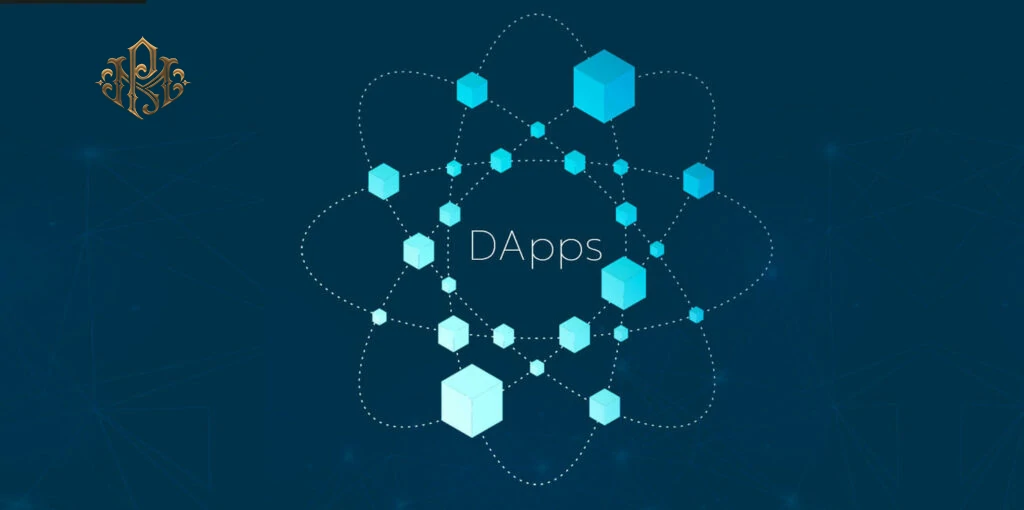
Close



In recent years, decentralized applications (dApps) have emerged as a prominent innovation in the world of technology. Built on blockchain technology, dApps offer a new paradigm for application development and deployment. Unlike traditional applications that rely on centralized servers, dApps operate on a distributed network of computers, providing enhanced security, transparency, and user control. In this essay, we will delve into the fascinating world of decentralized applications, exploring their characteristics, benefits, and potential impact on various industries.
I. Understanding Decentralized Applications (dApps)
A. Definition and Core Characteristics:
A decentralized application, or dApp, is an application that operates on a decentralized network rather than relying on a central authority. They are built using smart contracts, autonomous pieces of code that execute predefined actions when certain conditions are met.
B. Distributed Architecture:
Unlike traditional applications that operate on centralized servers, dApps utilize blockchain networks, such as Ethereum or EOS, to host and execute their code. This distributed architecture ensures that no single entity has complete control over the application, fostering transparency and reducing the risk of censorship or data manipulation.
C. Transparency and Immutability:
Every transaction and action performed within a dApp is recorded on the blockchain, resulting in a transparent and auditable system. Once recorded, data on the blockchain becomes immutable, making it nearly impossible to alter or tamper with historical records.
II. Benefits of Decentralized Applications
A. Enhanced Security and Privacy:
With dApps, users have more control over their data and digital assets. The use of public-key cryptography and decentralized storage systems ensures that personal information remains secure, reducing the risk of data breaches and unauthorized access.
B. Eliminating Single Points of Failure:
Traditional applications often have vulnerable central points of failure, such as servers or databases. In contrast, dApps operate on a decentralized network, eliminating these vulnerabilities. Even if some nodes in the network fail or are compromised, the application remains functional.
C. Interoperability and Openness:
Decentralized applications can interact with each other seamlessly due to standardized protocols and open APIs. This interoperability fosters innovation and enables the creation of powerful ecosystems where various dApps complement each other’s functionalities.

Decentralized Applications (dApps): Revolutionizing the Digital Landscape
D. Community Governance and Consensus Mechanisms:
Many dApps incorporate governance features that allow participants to have a say in the decision-making process. Consensus mechanisms, such as proof-of-stake or delegated proof-of-stake, enable stakeholders to validate transactions and maintain the integrity of the network.
III. Potential Impact on Various Industries
A. Finance and Banking:
The financial sector has been one of the primary beneficiaries of dApp technology. Decentralized finance (DeFi) platforms offer innovative solutions for lending, borrowing, and asset management, enabling individuals to access financial services without intermediaries.
B. Supply Chain Management:
By leveraging blockchain’s transparent and immutable nature, dApps have the potential to revolutionize supply chain management. They can enhance traceability, reduce counterfeiting, and enable more efficient logistics by providing real-time information and enhancing trust among stakeholders.
C. Healthcare:
Decentralized applications can improve healthcare by securely managing medical records, facilitating patient consent, and enhancing interoperability between different healthcare providers. Moreover, dApps can enable secure and transparent drug provenance, ensuring the authenticity and safety of pharmaceutical products.
D. Social Media and Content Creation:
Traditional social media platforms often face issues related to censorship, privacy, and data ownership. Decentralized social media dApps aim to address these concerns by giving users control over their data and enabling direct peer-to-peer interactions, fostering communities built on trust and transparency.
Conclusion:
Decentralized applications (dApps) have sparked a technological revolution, offering a new paradigm for application development and deployment. By leveraging blockchain technology, dApps provide enhanced security, transparency, and user control. Their benefits extend beyond the realm of finance, influencing industries such as supply chain management, healthcare, and social media. As dApps continue to evolve and gain mainstream adoption, they have the potential to reshape our digital landscape, empowering individuals and fostering innovation in countless ways.